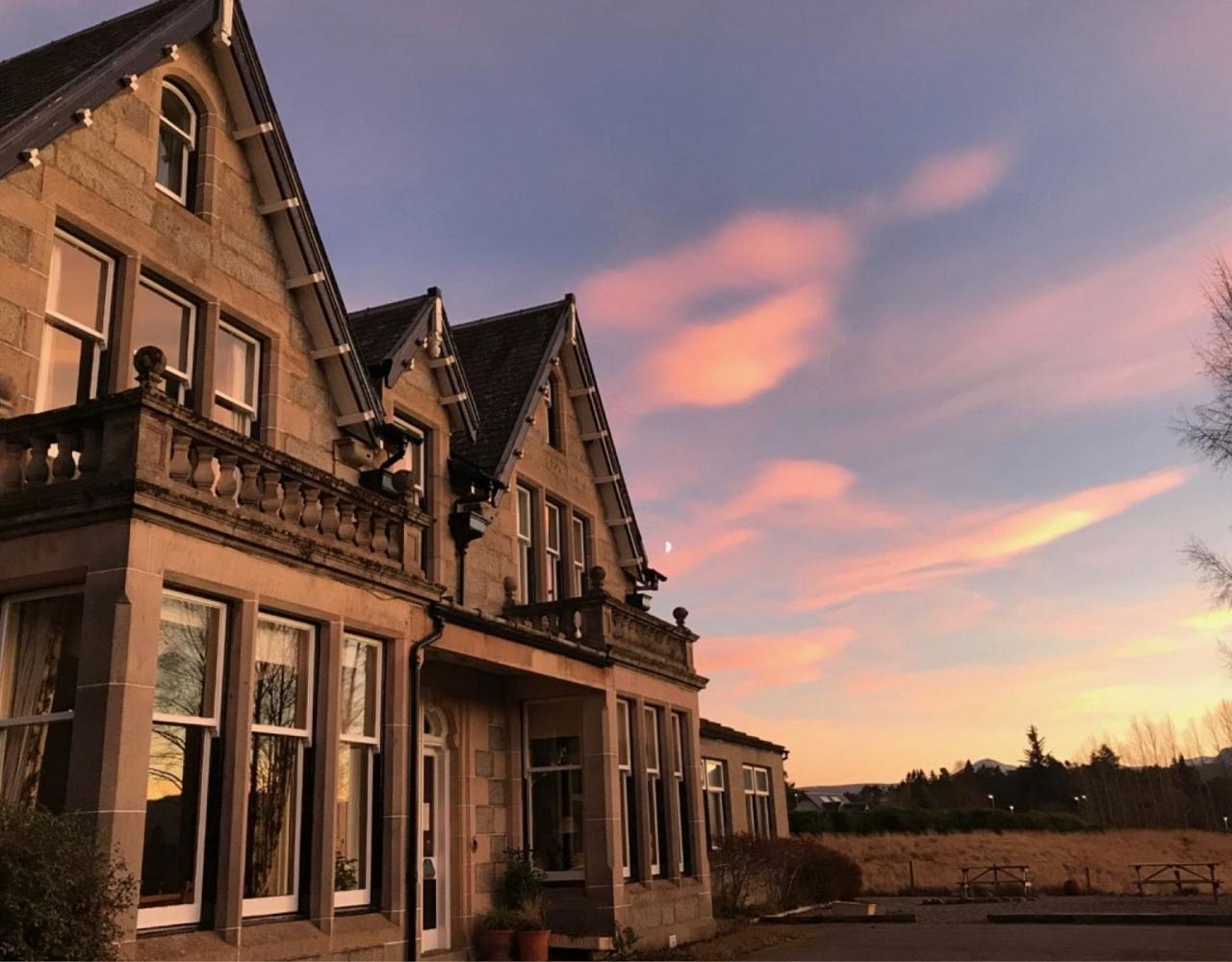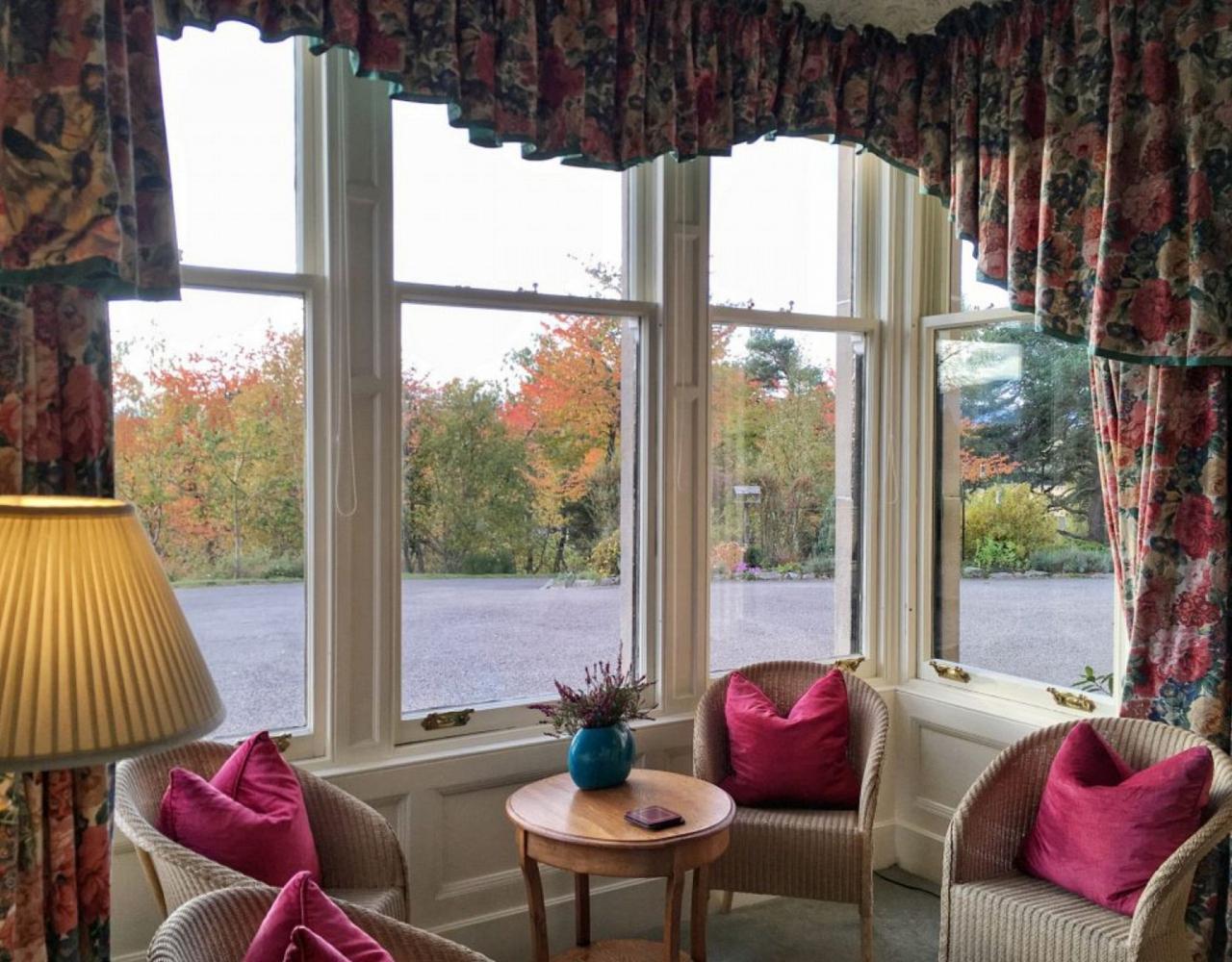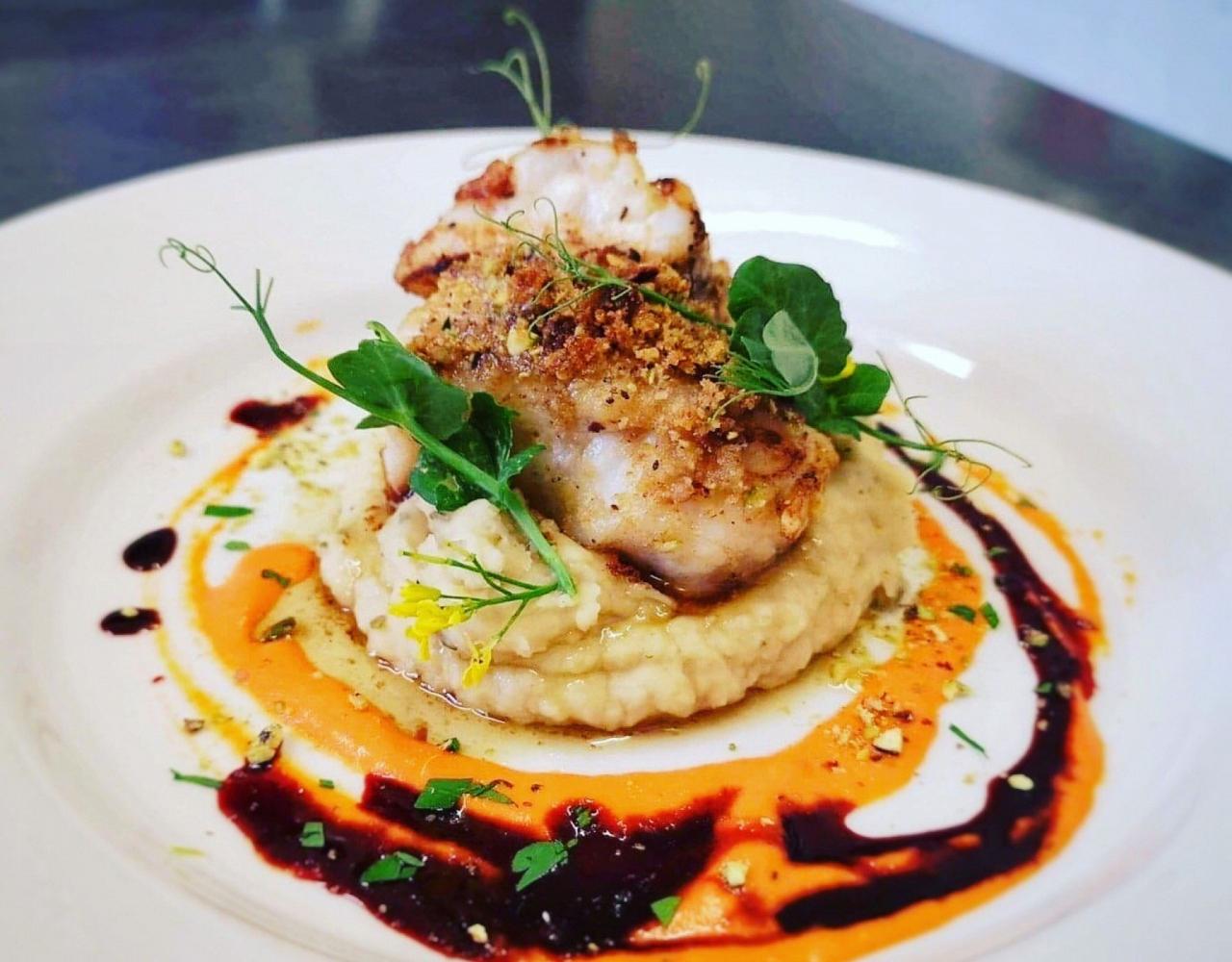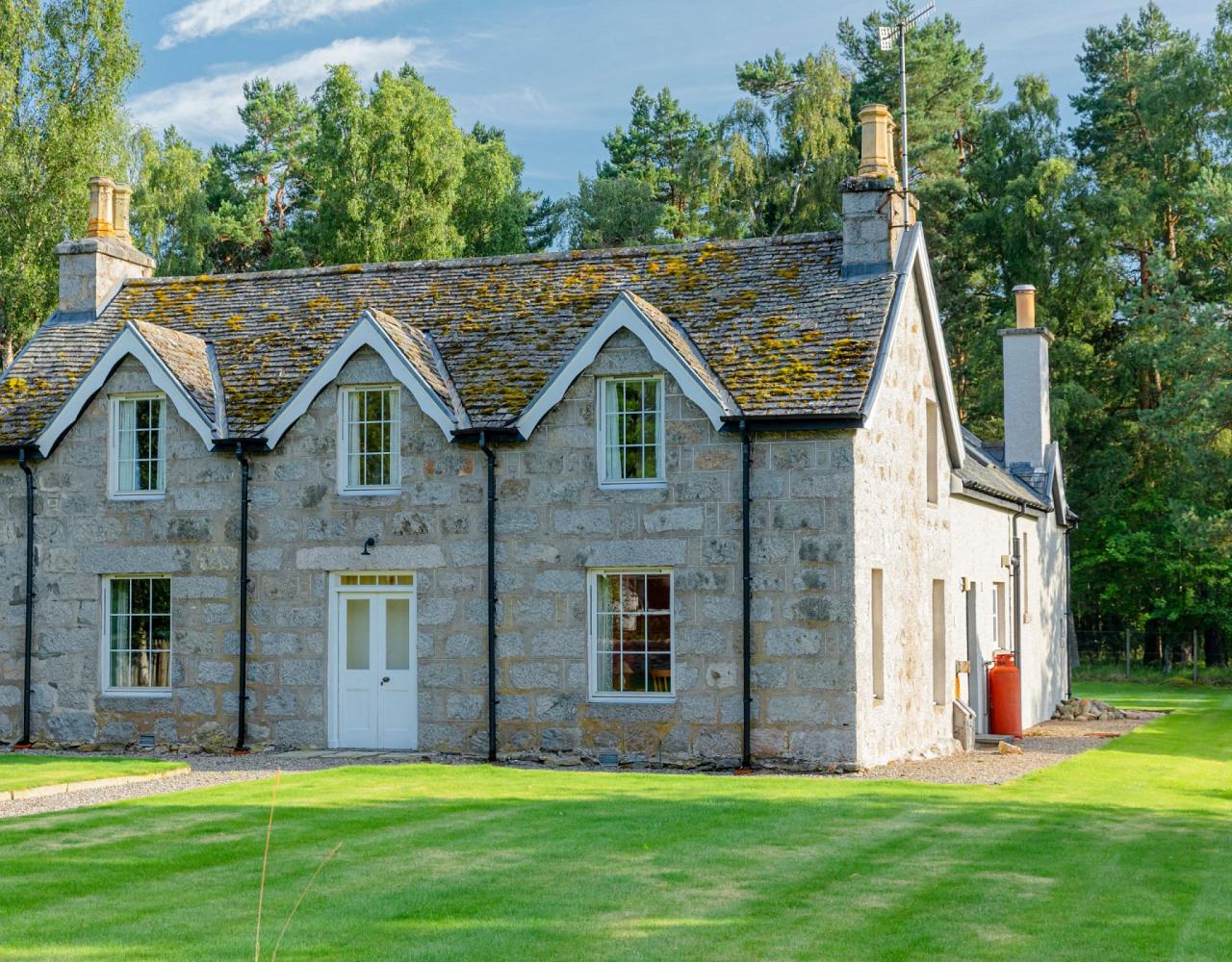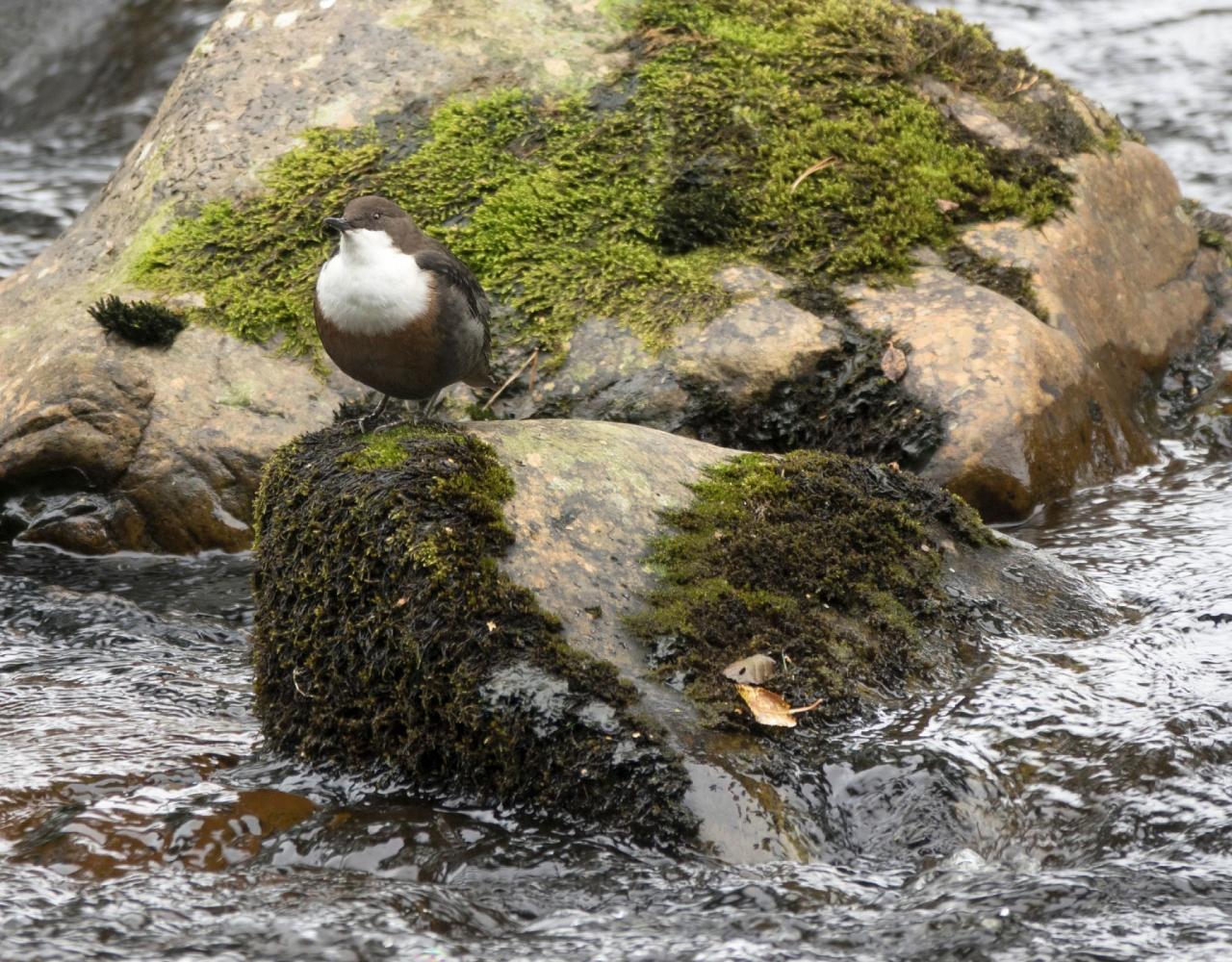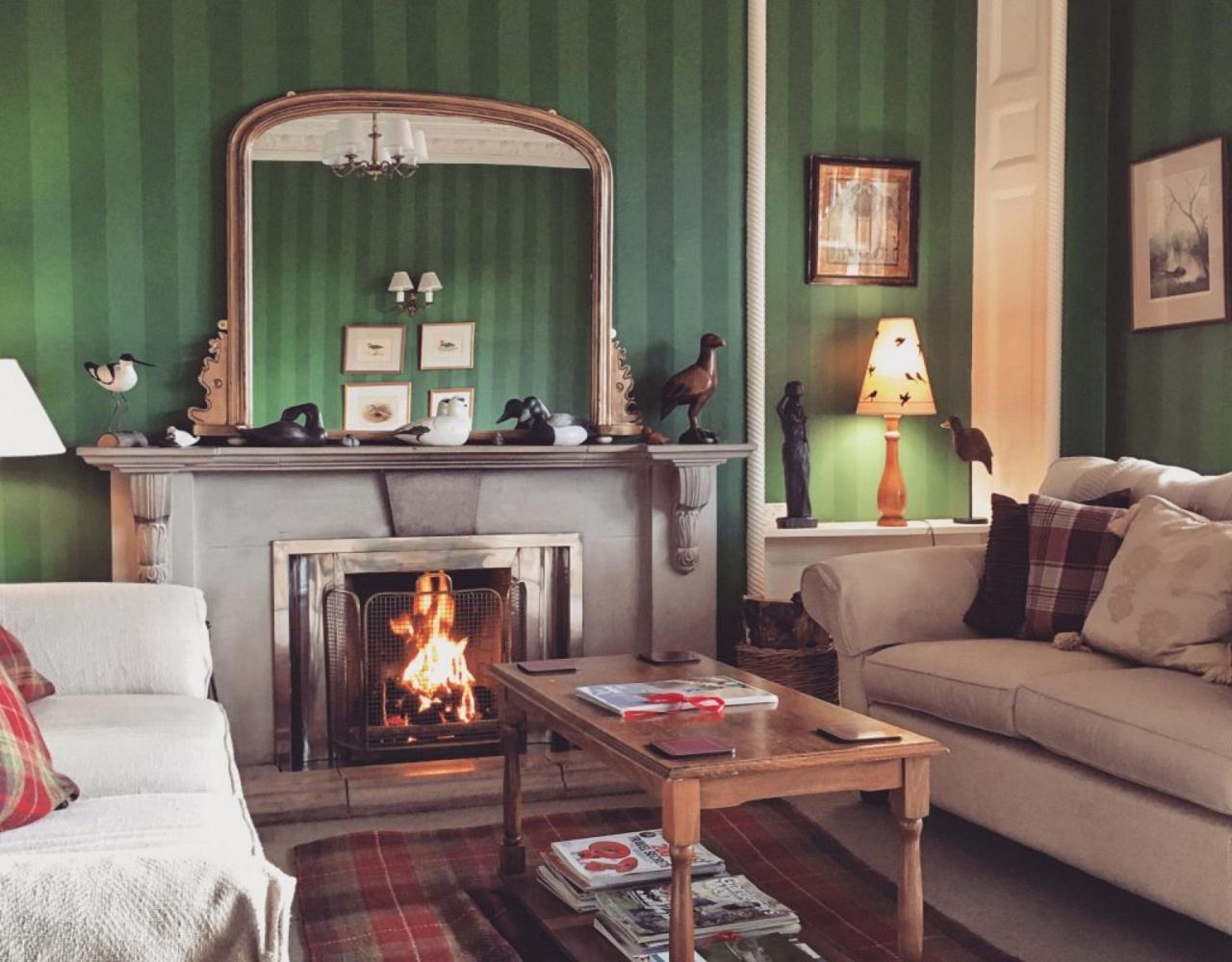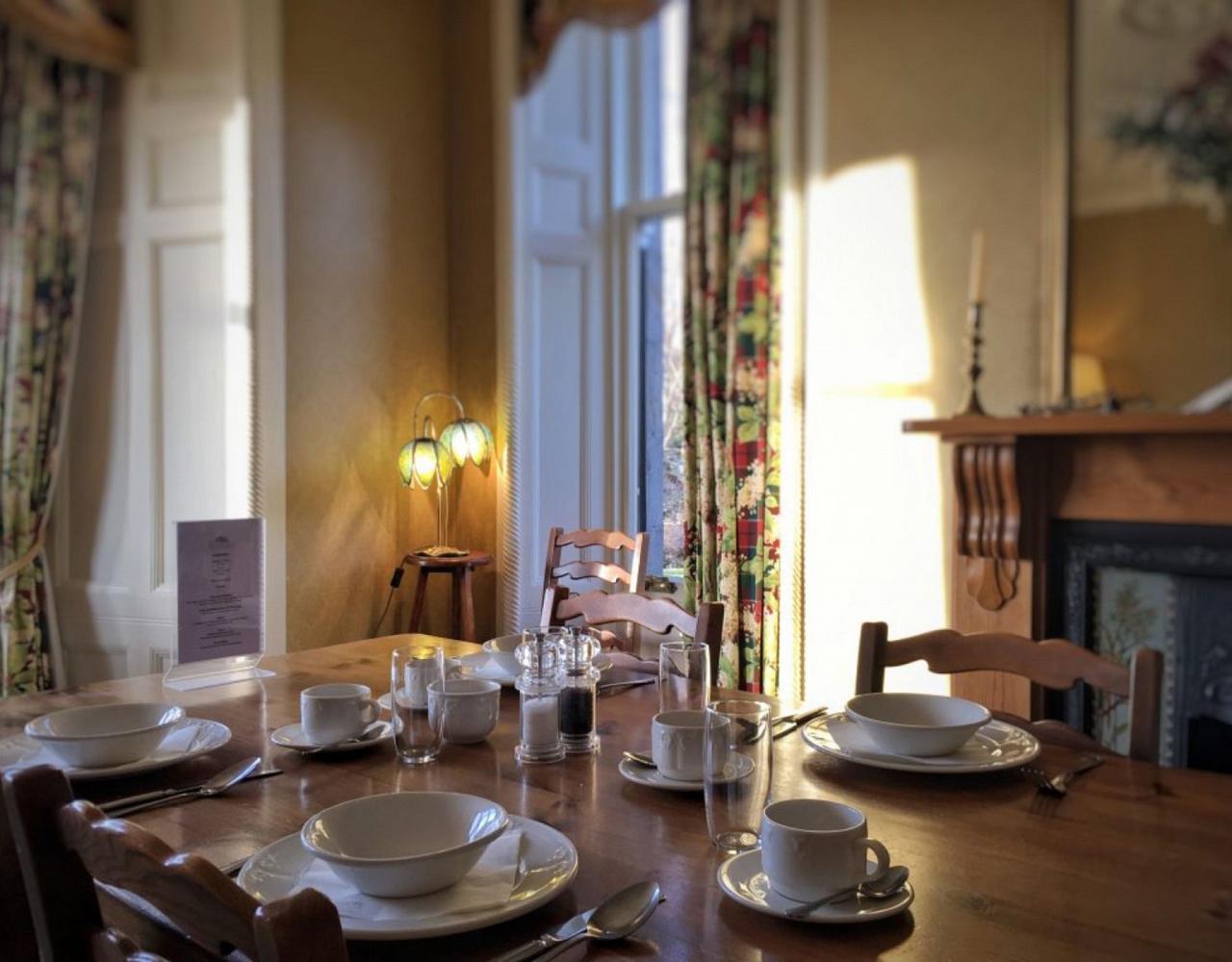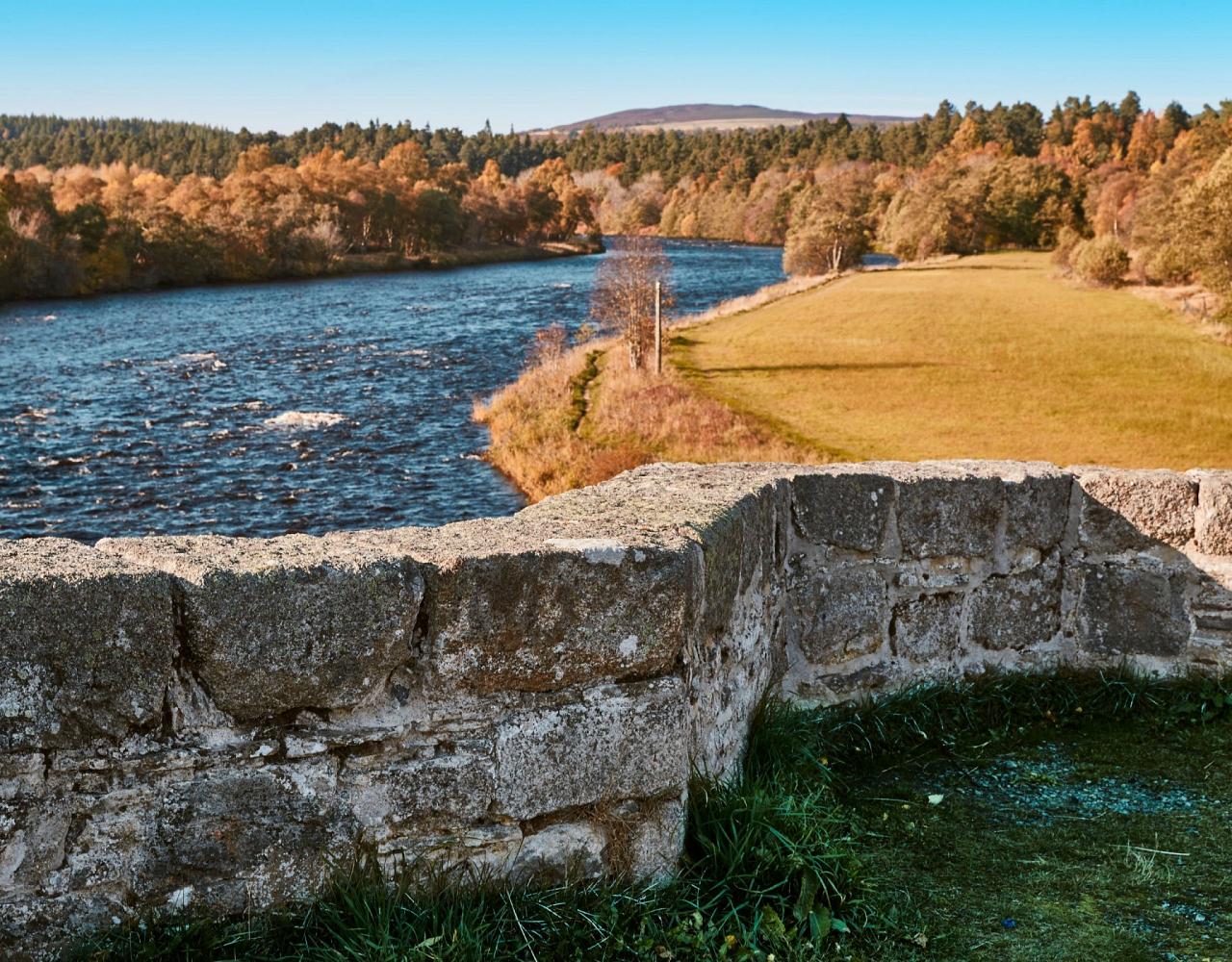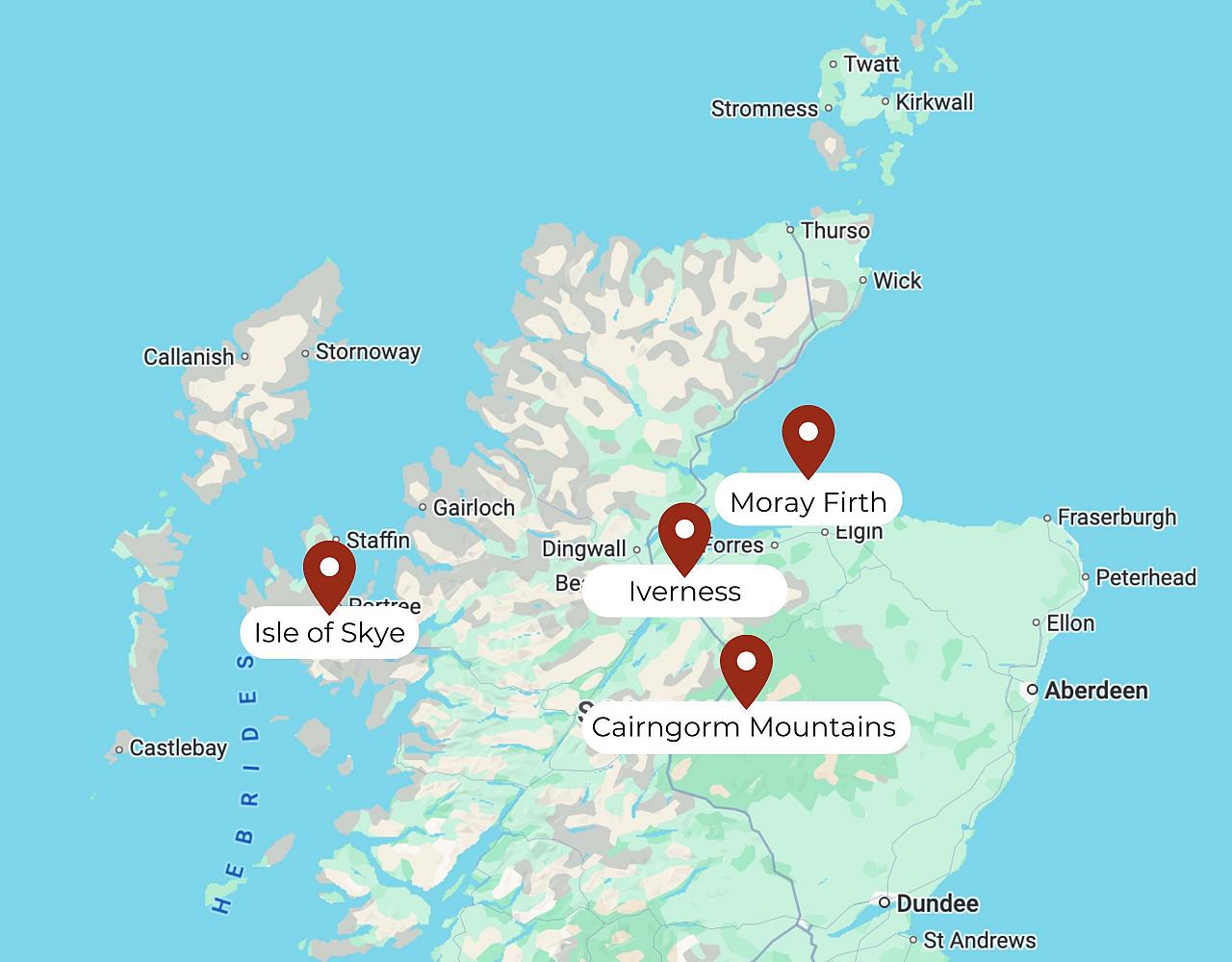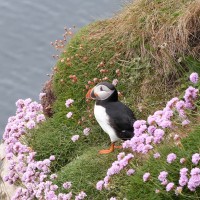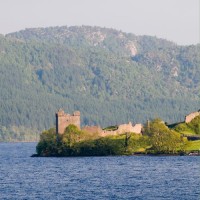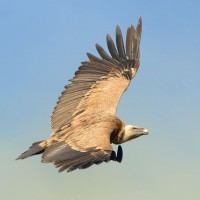Trip Itinerary
Itineraries are guidelines; variations in itinerary may occur to account for weather, road conditions, closures, etc. and to maximize your experience.
Fri., Oct. 2 Arrival in Inverness, Scotland | Transfer to Nethy Bridge
Welcome to Scotland! Most flights from the US originate yesterday and fly overnight. For those flying into Inverness, we will arrange a transfer to Nethy Bridge, where our welcome dinner and first night hotel is located. If arriving by train, the Aviemore Train Station is closest to Nethy Bridge.
Tonight, we enjoy a welcome dinner to get to know our guide and fellow travel companions and learn more about our adventure!
Accommodations at the Mountview Hotel in Nethy Bridge (D)
Sat. Oct. 3 Birding & Walking in the Strathspey Forests
Starting close to our base, we explore the Abernethy Forest in a habitat type that has existed here for close to 8000 years. This ancient Caledonian forest is the largest natural woodland remaining in Britain and walking the trails we listen for vocal Crested Tit, which in the UK are only found in a small region of Scotland. Other likely species include Great Spotted Woodpecker, Goldcrest, Coal, Blue and Great Tits, Treecreeper and Eurasian Jay and we look out for Red Squirrel as we walk. Scottish Crossbill are also found in our forests, though with both Common and Parrot Crossbills also present, separation of these three species can pose a real identification challenge! Capercaillie may also be encountered, but this rare grouse is in rapid decline, and we don’t intensively search for them.
Another walk in the afternoon takes us along a section of the River Spey, where we can familiarize ourselves with a different suite of local birds. On the water, White-throated Dipper, Common Merganser and Goldeneye may be seen, incoming Brambling join Lesser Redpoll, Siskin, Chaffinch, Greenfinch and Goldfinch in the birch trees with Buzzard, Red Kite, Eurasian Sparrowhawk and Kestrel over open ground.
Accommodations at the Mountview Hotel (B,L,D)
Sun., Oct. 4 Exploring the Moray Coast
Today we head north to the Moray Coast, where great birding awaits at a busy time of year when summer and winter overlap. Scanning offshore, the wide range of species may include Red-throated and Great Northern Loons, Horned Grebe, Common Eider, Common and Velvet Scoters, Long-tailed Duck and Red-breasted Merganser. On tidal estuaries Wigeon, Teal and Pintail gather, and shorebird numbers are high. Among the flocks of Oystercatcher, Ringed Plover, Dunlin, Knot, Turnstone, Sanderling, Curlew, Redshank, Bar and Black-tailed Godwits we search for newly arrived Purple Sandpiper and scarcer species such as a Little Stint. A day with plenty of variety, flocks of Whooper Swans and Pink-footed and Greylag Geese make for a real spectacle, while a 1 – 2 mile walk with the sea on one side and farmland on the other, helps boost our day’s bird-list, potentially adding Grey Partridge, Mistle Thrush, Tree Sparrow, Linnet, Yellowhammer and Reed and Corn Buntings.
Accommodations at the Mountview Hotel (B,L,D)
Mon., Oct. 5 Cairngorm Mountain
In Scotland you don’t have to contend with high elevation to enjoy a taste of the arctic-alpine realm, as the highest peaks of the region, rounded and sculpted by time reach just over 4,000 feet. Your local guide chooses the best section within the Cairngorm range to suit the group’s needs, and we can drive to around 2000 feet before commencing our hike up towards the plateau. Weather you choose walking or birding today, with unforgettable mountain vistas all around we look out for Ptarmigan, Snow Bunting and Mountain Hare. Also likely around lower elevations are Red Grouse, Raven, Wheatear, Meadow Pipit and perhaps a lingering Ring Ouzel, and after a day in the hills, a wee dram in front of a roaring fire and excellent dinner back at the Mountview Hotel are a just reward for our efforts today!
Accommodations at the Mountview Hotel (B,L,D)
Tues., Oct. 6 Seabirds in the Minch
Our legs may be weary after a day in the hills, so we take a break from walking to join the ferry to the Isle of Lewis in the Outer Hebrides. This is a great way to watch sea-birds in Scotland, the ferry offering excellent viewing opportunities in all directions and we take both the outbound and return sailings cross the Minch to double our chances. Leaving port, Red-throated Loon, Black Guillemot, Shag, Kittiwake and Arctic Tern are likely to be our first birds and entering deeper water, Fulmar, Gannet, Common Murre and Razorbill become numerous. Manx and Sooty Shearwater, Storm Petrel, Great Skua and Parasitic Jaeger are our next goals, and following westerly winds we have chances of Leach’s Petrel, Sabine’s Gull, Red Phalarope and Pomarine and Long-tailed Jaegers as well as Balearic, Cory’s or Great Shearwaters in influx years.
The Minch also has a superb reputation for cetaceans, and if seas are calm during our five hours onboard, we have chances of Harbour Porpoise, Risso’s and Short-beaked Common Dolphins and perhaps Minke Whale. The scenery in this part of Scotland is also spectacular, and traditional fish and chips on the Ullapool harbor front with the mountains in the background is the perfect ending, before returning to Nethy after dark.
Accommodations at the Mountview Hotel (B,L,D)
Wed., Oct. 7 Migrant Hunting on the East Coast
Today is a flexible day with lots of options, and your guide selects the best possible location for potential new species. Depending on weather conditions, time walking and birding at either the Black Isle or coastal Aberdeenshire may prove rewarding, as might a visit to an under-watched location such as the Tarbet Peninsula. In fabled easterly winds, migrant passerines may ‘fall out’ of the sky and checks of scrubby cover and plantations can produce warblers, flycatchers, pipits, chats, thrushes and finches in good numbers. In such conditions, Redstart, Wheatear, Whinchat, Ring Ouzel, Pied and Spotted Flycatchers and Brambling are likely, with chances of an eastern rarity like Yellow-browed or Barred Warbler, Red-breasted Flycatcher, Wryneck, Red-backed Shrike or even Waxwing in an influx year. Common Crane, a species that now breeds in Scotland is another possibility, with fields full of newly arrived Whooper Swan and geese newly arrived for winter plus migrant waders, gulls, terns and raptors likely wherever we go.
Accommodations at the Mountview Hotel (B,L,D)
Thurs., Oct. 8 Local Roundup | Favourite Places
We begin our last day in the Highlands with an early morning outing to a Black Grouse lekking site to start. Another of Britain’s displaying grouse, at this time the males begin gathering post summer, and on a still morning we often hear them popping and cooing! We spend the rest of the morning exploring nearby moorland, with raptors such as Golden Eagle, Red Kite, Goshawk, Hen Harrier, Merlin and Peregrine perhaps featuring. Red Grouse, Golden Plover and Stonechat may also be seen in the same habitat, farmland can be good for Fieldfare, Redwing and Brambling flocks and any unseen local specialties.
Being our last day in the Highlands we can also consider revisiting some of our favourite places and walking routes. A Whiskey Distillery tour or time exploring a local Highland town can also be included today, and the guiding team designs a leisurely afternoon before we embark on the second leg of our adventure and relocate to Skye.
Accommodations at the Mountview Hotel (B,L,D)
Fri., Oct. 9 Transfer to Skye
After breakfast we work our way slowly north-west, via the Torridon mountain range before continuing out to the Applecross Peninsula. Amidst stunning west coast mountain scenery, we take birding stops beside long sea-lochs scanning for Black-throated Loon, Eider, Red-breasted Merganser and Black Guillemot. In fine weather we can take a short walk into the mountains to search for Rock Ptarmigan again, where Golden and White-tailed Eagles may be watched soaring over the peaks. The sound of rutting Red Deer echoes around the whole area at this time of year and in the best weather, we enjoy incredible first views of the island of Skye across the water.
We aim to cross onto Skye in the afternoon, working quiet coastlines in the south for Otter and Grey and Common Seals. Waders gather on seaweed strewn beaches, and we likely find Rock Pipit and Twite in the same habitats.
Accommodations at the Royal Hotel in Portree (B,L,D)
Sat., Oct. 10 North Skye
Often referred to as the ‘Misty Isle’, Skye is a wonderful autumn destination, the magical low light and changing weather giving picture-postcard views around every turn. Scotland’s second largest island and with the dramatic Cuillin ridge at its core, it is an excellent place to watch Golden and White-tailed Eagles, both of which are found here at some of the highest breeding densities in the world! As well as being great for eagles, the Trotternish Peninsula with its fascinating geology also has some great walking opportunities, and we spend the day enjoying the Old Man of Storr, the Quirang and Staffin Bay, searching for dinosaur footprints embossed in the rocks at the latter. On quiet estuaries, Pale-bellied Brent Geese, Greenshank and Turnstone plus other waders and gulls may be found, with loons, sea ducks and auks in deeper water. Otters can pop up just about anywhere on the coasts, and passing Whooper Swan and Barnacle Geese gather in the fields. A superb day of scenery, birding and walking!
Accommodations at the Royal Hotel in Portree (B,L,D)
Sun., Oct. 11 Central & West Skye
Our guides know Skye well, and today we explore wild and remote corners, many of which tourists seldom venture. Likely sites may include the harbour and town at Portree, Dunvegan, while walks at Talisker Bay and Neist Point should give us nice views of resident Twite, as well as migrants in the fields, gardens and around the headland. Seabirds and cetaceans are another possibility, and we keep an eye on the skies as we travel between mountains for Golden and White-tailed Eagles overhead.
Accommodations on Skye (B,L,D)
Mon., Oct. 12 Back to Inverness via Loch Ness
After some final birding around Broadford Bay on Skye, we depart via the bridge mid-morning. A stop beside Eileen Donan Castle gives us another chance to find otter and seals before we travel into the Great Glena towards the iconic Loch Ness. This is a 4-5 hour drive in total, and we break it up with a visit to Urquart Castle, picnic lunch and some birding along the shores of Loch Ness en route.
Accommodations in Inverness (B,L,D)
Tues., Oct. 13 Culloden Battlefield | Coastal Birding
After breakfast, we head a short distance to the impressive historic site of Culloden Battlefield. We have time to take in the exhibits and walk through the field, a sobering but rewarding experience. The nearby Clava Cairns, a historical site from another era is also worthy of a visit. A good place for a picnic lunch, it is here we can also learn some of the more common woodland birds.
In the afternoon, there are several options, depending on weather and what we have already seen. We can head to the coast to either Black Isle or Moray Coast to look for any rarities. Alternatively, for those who wish, you can enjoy a free afternoon in the city to explore Inverness.
We enjoy a last dinner with our guide before settling into our accommodations close to the airport at Inverness, in preparation for our onward travel the next morning.
Accommodations in Inverness (B,L,D)
Wed., Oct. 14 Departures
Depart at your leisure today. The hotel is a short walk from the airport.
Essential Information +
This information is important for being prepared for your journey; we want you to have Read more
This information is important for being prepared for your journey; we want you to have the best experience possible. If you only read one section, this one is key!
Ahead of Your Tour
- It is required that your passport will be valid for the duration of your stay. We suggest at least 3 months validity beyond end of tour to allow for unexpected delays in return travel.
- As of January 8, 2025, an electronic travel authorization (ETA) will be required for visitors from dozens of visa-exempt countries, including the United States and Canada. You can apply online here.
- Please check current CDC recommendations for travel to Scotland and consult with your doctor about general travel vaccinations you should have as precaution for travel. See the “Health and Inoculations” section below.
- Travel insurance in case of serious medical emergency is strongly recommended. Full health coverage and repatriation is available through Allianz Travel Insurance.
- Soft sided luggage/duffel bags are easiest for packing the vans. Pack essential medications in your carry-on luggage, as well as one day of clothing and optics in case of luggage delay.
Passport, Visas & Documents
Guidelines and regulations can change. It is always advisable to double-check documentation requirements 60-90 days ahead of traveling. If you are from another country, please contact the Scotland embassy website for guidelines. Information for U.S. citizens can be found at https://travel.state.gov/content/travel/en/international-travel/International-Travel-Country-Information-Pages/UnitedKingdom.html.
Passport: At the time of writing, the U.K. requires a passport that is in good condition and is valid for the duration of your stay. We suggest at least 3 months validity beyond end of tour to allow for unexpected delays in return travel. If traveling to other countries, you should check for their requirements should they differ. You should have at least one blank page per stamp. The blank pages need to say “Visas” at the top. Pages marked “Amendments and Endorsements” will not be accepted.
Visa: The U.K. is now requiring travelers from visa-exempt countries including the U.S. to apply for an electronic travel authorization (ETA) to enter the country as a tourist. You can apply for an ETA online here. It costs around $13 and is valid for multiple journeys over a two-year period. Once approved, the ETA is linked to your passport, so there is no physical document.
As a precaution for lost or misplaced documents you carry on your person during travel, we highly recommend you keep electronic backup copies on your phone (either photo or PDF scan), as well as a copy left with your emergency contact at home. The recommended important documents to copy include, but are not limited to; your passport ID page, travel visa, the front and back of your credit card(s), the airline barcode on your luggage. This will greatly expedite getting new ones if necessary – we hope everyone will always keep travel documents close so that losing them will not be an issue.
General Health & Inoculations Information – Be Prepared!
We will share your health information with your guide. This information will be kept confidential but is very important as we want to be best prepared in case of medical emergency.
Vaccinations: Bring your up-to-date vaccination records with you. At the time of writing there were no required vaccinations to enter Scotland. However, the CDC recommends that all travelers be up to date with routine and basic travel vaccinations (such as Hepatitis A and Typhoid) before traveling to any destination. Please consult with your doctor for recommendations at least 4-6 weeks before departing on your trip. A helpful resource is the U.S. Centers for Disease Control and Prevention (CDC) webpage for the U.K., or you may contact them by phone (800) CDC-INFO or (800) 232-4636.
Prescriptions: It is a good idea to pack any meds you take regularly in your carry-on luggage. Bring an extra pair of glasses or contact lenses. Bring an adequate supply of any prescription medications you use, a copy of the prescription and a list of generic names of your medicines as “back-up” in case it is necessary to purchase drugs while abroad. You’ll want to keep medications in their original, labeled containers.
Allergies: To be prepared for environmental triggers to allergies or breathing difficulties, please bring your allergy and/or asthma medication(s). If you have severe allergies talk to your doctor about carrying an EPI pen and notify your guides. It is also recommended to carry with you an up-to-date record of known allergies, chronic medical problems and Medic Alerts so that, if necessary, emergency treatment can be carried out without endangering your health.
Common Ailments: We recommend that you bring a travel-sized first aid kit and a supply of standard over-the-counter medications for prevention or treatment of common ailments (such as diarrhea, constipation, stomach upset, cough, congestion, head or body aches, insect bites and sunburn); as well as ointments, moisturizer, sunscreen, oral rehydration salts, band-aids, moleskin for blisters, cotton swabs, nail clippers, and tweezers, etc.
Altitude sickness: It can affect some and, if there is a concern, be prepared. The most general symptoms are headache and occasionally fatigue and dizziness. You’ll want to take it easy, particularly at first. These symptoms can be reduced by resting, drinking plenty of water and taking aspirin. If you have worries about the altitude, ask your physician about medications that may be right for you.
Weather & Climate
Plan for a large variation in weather conditions. Brilliant sunshine and rain are equally as possible. The weather is often cool in Scotland, even in the summer, with thunderstorms and rain. Highs average in the low-60s°F, and lows in the mid- 40s°F, with comfortable to high humidity. Come prepared with layers of clothing, including a rain-jacket that can double as a windbreaker, and an umbrella. Bring waterproofs, walking boots or shoes and warm clothing. Scotland does have rain, and as it’s a regular feature, the field work will continue regardless. We suggest you be well prepared!
Food & Drinks
Meals during this journey will reflect local cuisine and specialties, and will be varied and flavorful.
Bottled water will be available for field trips and drinking water is provided for you to refill a bottle. One of the many ways we strive to do our part for the environment is by trying to reduce our consumption of plastics; if convenient we appreciate if you can bring reusable water bottles.
Packing, Clothing & Laundry
Dress is very informal. While some people will change for dinner, it is usually just to a drier or cleaner version of what they wore during the day. Laundry services can be arranged at some of our hotels, those where you have multiple nights. But it is most convenient if you are content with hand laundering.
Please, pack light! We are serious about this – we move around a lot; you just do not need much to cope with tropical life. Please do not bring anything more than you must. Lay out your hopeful things to take and then do a serious paring down!
TRAVEL TIP: Imagine NOT getting your suitcase. Wear your most important shoes for the field and have one day’s clothing change (including a change of underwear!). And please DO NOT pack any essential medications or vital optics in your checked luggage!
Spending Money
The official currency in Scotland is the pound sterling (GBP). We advise you carry a mix of different types of payments, such as cash, an ATM card, and a credit card. For the current exchange rate, please refer to an online converter tool like www.xe.com, or your bank. If you plan to exchange cash in country, bring large U.S. bills ($50 or $100) in good condition (no rips or tears) that will give you the better rate when exchanging to local currency.
When using the ATM to withdrawal cash, keep in mind it might only accept cards from local banks or not allow cash advances on credit cards. Many U.S. banks charge a fee of $1 - $5 each time you use a foreign ATM. Others may charge you a percentage of the amount you withdraw. Check with your bank before departure. You must become familiar with how to use your ATM card and PIN number ahead of the journey.
We suggest you have more than one card available, if possible. You may want to bring more than one brand of card (VISA and Mastercard are commonly accepted; American Express is less common). Some smaller shops and restaurants, or taxis require cash, so it is always a good idea to ask before making a purchase. Also, we recommend that you advise your bank or credit card company that you will be traveling abroad to avoid questions, card freezes, or charges. If you have a choice of cards, bring one with no foreign exchange fees.
Traveler’s checks are not widely accepted. They can be difficult to exchange. We do not advise you use them.
Gratuities
Expect the normal tipping protocol to apply for your hotel maids and bar service. If at the end of the tour, you would like to show our appreciation to your guides, tipping is entirely appropriate but at your discretion. We hope that you will be pleased with all professional services. Gratuities for group meals are included. For your birding tour guide, we suggest $10-$15 per day per guest. Note that if there is more than one guide, this can be split among them.
*Please note that these suggested tips are quoted in U.S. Dollars. You will want to convert and tip in Pounds.
Cell Phones & Internet Service
If you plan on using your cell phone on this trip, please check with your wireless provider to see if your phone and service will work in your destination country. Ask for “international roaming” to be turn on your phone. Or you can buy a local SIM card at the airport and insert this in your mobile phone (just make certain your phone can accept one). Renting an international phone may also be an option.
If your phone can connect to Wi-Fi, you may be able to make voice and video calls free of charge. Please contact your cell phone provider for further details. Another option if you have access to Wi-Fi, is to use smartphone apps like Skype, WhatsApp, or Viber to send text messages, and make voice calls, or video calls. Many smartphones, tablets, or laptops come with one of these apps pre-installed or you can download for free. If bringing a laptop or tablet, get a good dustcover to protect it at all times.
Make sure if you do NOT want to use your cell phone that you turn off your cellular data. You could incur huge charges if you are not on Wi-Fi. Putting your phone in airplane mode if you mainly use it for photos will save the battery as well.
Your hotels and most local restaurants provide Wi-Fi at least in their common areas. Although it is generally a reliable service, it can be affected by adverse weather conditions due to the remote location.
Please refrain from taking or making cell phone calls in the vehicles when traveling with other passengers, unless it appears to be an emergency. This disrupts other guests, plan on cell phone call use on your own time.
Electricity
The standard voltage in Scotland is 240V, higher than in the United States (120V), with frequency of 50 Hz. Electrical sockets (outlets) in Scotland are primarily "Type G".
You will most likely need to bring a power plug adapter, and a voltage converter in order to use appliances or devices from the U.S. To be sure, check the label on your appliance. More information can be found at https://www.power-plugs-sockets.com/scotland/.
Time
Scotland is in the Greenwich Mean Time Zone, which is 5 hours earlier than New York (Eastern Time). Scotland does observe Summer Time (or Daylight Savings Time). A great website if you want to tell someone to check ahead of calling you is www.timeanddate.com.
Questions?
Please contact Naturalist Journeys by email at clientservices@naturalistjourneys or telephone at our office: (520) 558-1146 or toll free: (866) 900-1146 if you have any questions. Many thanks for traveling with us and we hope you enjoy your journey!
Pace & Protocols +
Pace of the Tour & What to Expect
You will receive a Schedule-at-a-Glance and list of Read more
Pace of the Tour & What to Expect
You will receive a Schedule-at-a-Glance and list of hotels (our eContact List) a few weeks before your departure. This will serve as an outline for each day and alert you to any recent changes made in the schedule or to our hotels, if needed.
Our journeys are set up to follow the rhythm of nature. Our focus is on birding and nature; we offer full, well-planned field days and often get up early for that magical time around dawn. We generally follow the published itinerary, but we stay flexible to the weather, wildlife opportunities and the interests of the group. Your guide will keep you apprised of the next day’s schedule at each evening meal, noting what to bring and what to prepare for. Questions and/or concerns are welcome.
The pace of our Naturalist Journeys tours is moderate; to fully participate you should be able to get in and out of vehicles several times a day, and walk 1-3 miles over uneven terrain. It is important to participate with a flexible attitude as adjustments may be made in our schedule to make the most of our time in the field or for other purposes at your guide's discretion. We are not a “listing” bird company that drills down on target species, but at times we do wait for those special species unique to the places we visit. During the day, we take time to stop for photos and for educational opportunities to learn about conservation projects, landscapes, and geology. We appreciate other taxa as well as birds, with mammals often the biggest draw but plants and butterflies are also very popular. Our clients often lend their own expertise to the mix.
We like to make meals a fun and memorable part of the experience, too. Breakfasts are often at hotels, and we carry snacks, fruit, and water in the vans each day. Lunches are a mix of picnics in the field (weather dependent) and a chance to dine with locals at small cafes and restaurants. For dinner, we pride ourselves in our homework to keep up with the best choices for dining, choosing restaurants with atmosphere that specialize in local foods. On occasion we keep dinner simple to go back out in the field for sunset wildlife viewing or night walks. In some remote locations, our choices are limited. If you are tired, room service for dinner may be an option you can choose.
Naturalist Journeys International Trips: Guide Role
Naturalist Journeys supports ecotourism and the development of excellent local guides. Once we know our international partners and guides well, we can send out small groups working directly with these trusted partners, adding a Naturalist Journeys guide to assist the local expert when we have a group of 6-7 or more. This helps us keep your costs down while retaining tour quality. The local guide is your main guide. You can expect your Naturalist Journeys guide to be well-researched and often they are experienced in the destination, but their role is not to be primary, it is to help to organize logistics, help you find birds, mammals, and interesting other species in the field, keep reports, help facilitate group interactions, and to keep the trip within Naturalist Journeys' style. Local guides live in the countries we travel to, know the destinations intimately, and are often the strongest force for conservation in their countries. They open many doors for us to have a rich experience.
Smoking
Smoking is not permitted in any vehicle or in any situation where the group is participating in an activity together, such as a vehicle excursion or a guided walk. Please respect all designated smoking areas at hotels and restaurants.
Transportation
As a courtesy to each other, we ask that all travelers please rotate seating. On international trips we may all be in one small bus, on some trips we are in vans, particularly the roomy Sprinter Vans when available. Some areas require us to be in smaller 4-wheel drive or safari vehicles. Rotation allows you to sit with different drivers and alternate front and back seating.
Photo Release & Sharing
We take many group photos and will share photos with the group. And after your tour, we will organize a chance to share photos via Dropbox or Google Photos. Please note that this is our policy and if you prefer to be excluded, we need to know ahead of your tour.
By registering for this tour, you agree to grant to Naturalist Journeys and its authorized representatives’ permission to record on photography film and/or video, pictures of my participation in the tour. You further agree that any or all of the material photographed may be used, in any form, as part of any future publications, brochure, or other printed materials used to promote Naturalist Journeys, and further that such use shall be without payment of fees, royalties, special credit or other compensation.
Travel Insurance
You are traveling in remote areas. Naturalist Journeys strongly recommends you have full medical and evacuation insurance from a company such as Allianz, for all international travel. If you do not have medical coverage or evacuation coverage on your existing travel insurance policy or for some reason elected not to take that out, we advise getting an evacuation plan with Global Rescue, World Nomads, Medjet, Allianz (they can do evacuation only) or a similar company. These plans are typically $300-$400 for a year for multiple destinations. This coverage may be a part of a larger Travel Insurance policy but can also be purchased on its own.
Questions?
Please contact Naturalist Journeys by email at clientservices@naturalistjourneys.com or telephone our office: (520) 558-1146 or toll free: (866) 900-1146 if you have any questions. Many thanks for traveling with us and we hope you enjoy your journey.
Packing List +
Please pack light!
Soft luggage is much easier for us to pack than a more rigid Read more
Please pack light!
Soft luggage is much easier for us to pack than a more rigid hard sided piece, so if you have the choice, please use your soft luggage. Be sure to have your name and address on the inside of the bag, as well as on the luggage tag on the handle. It is our hope that you can pack in one checked suitcase that does not exceed 45 pounds. Be sure to pack your personal medication, airline tickets, passport, binoculars, camera, and other essential items in your carry-on bag. You will want a day pack for field trips, so this is an ideal carry-on. Please reconfirm your airline’s baggage weight and size restrictions about a week or so before departure.
Dress is very informal. Scotland is known for its cool, mild weather and its frequent cloud cover and rain. Best be prepared for this variable climate by bringing rain gear and warm clothes. June highs average in the low-60s°F, and lows in the mid- 40s°F. You’ll encounter rain which will cause the temperatures to drop.
Long-sleeved shirts and long pants make ideal field clothing, as they are more protective from sun, insects and vegetation. Choose clothing you don’t mind getting dirty – and things that are comfortable and easy. Please avoid white or brightly colored outerwear for the field. Layering is your best strategy for comfort.
Clothing & Gear
- Long pants, 2-3 pair (comfortable and loose fitting is best)
- Shorts or zip-off/convertible pants (optional)
- Long-sleeved shirts (2-3)
- T-shirts or equivalent (4-5 – remember you may be buying some anyway!)
- Personal underclothing and pajamas
- Lightweight long underwear for cooler evenings
- Socks (light to medium weight and easy to wash and dry)
- Comfortable clothes for evening (a cleaner version of your field clothes or a skirt, sundress, etc.)
- Bathing suit (optional)
- Hat with broad brim
- Comfortable walking shoes - such as tennis shoes (great if they are water-resistant)
- Lightweight hiking boots – preferably waterproof
- Comfortable light shoes for evenings, travel days (Crocs work well or sandals)
- Jacket - fleece fabric is ideal
- Warm sweater or sweatshirt
- Raincoat/Waterproof shell (great if this doubles as a windbreaker)
- Rain pants (optional)
- Wind/waterproof gloves – for night spotting
- Warm Hat & scarf (or turtleneck) – for night spotting
- Field vest (optional), a great source is Big Pockets
Equipment & Miscellaneous
- E-ticket verification
- Passport, visa (if required), travel insurance info, money & credit cards.
- A secure pouch to carry the items above on your person at all times (such as a secure, under-clothing document pouch)
- As a backup: copies of all the above (phone and/or paper) packed in a separate location than on your person, plus a set given to your emergency contact at home as a backup. For passport, copy of the ID and entry stamp pages.
- Binoculars (a shower cap is great to cover these when raining)
- Umbrella - compact, not brightly colored (a great option for occasional rain as you can keep using your binoculars)
- Small daypack or fanny pack for carrying your field gear
- Small flashlight with fresh batteries
- Alarm clock, or use your cell phone
- Sunscreen/lip balm with SPF
- Sunglasses with neck strap
- Toiletry articles
- Spotting scope and tripod (optional)
- Camera and extra batteries/battery chargers, film or digital chips, lens cleaning supplies and your instruction manual (optional)
- Tablet or laptop for personal use and/or transferring photos, USB cord and charger (optional)
- Chargers for cameras and/or phones, and three prong adapters if needed
- Water bottle (or you can use one of ours and refill during the journey)
- Notebook or journal and pen (optional)
- Field guides (optional)
- Earplugs (if hotel noise or roommates snoring may bother you; these are optional)
- Cell phone
- Laundry soap for hand washing, travel sewing kit
- Rechargeable power bank (optional)
- Power plug adapter & electrical transformer
- A collapsible airplane footrest (such as an inflatable, foldable, or hammock type) may help make longer flights more comfortable. Some airlines may have restrictions, so confirm with your airline which types are allowed and where they may be not allowed, i.e. bulkhead or exit rows (optional)
WE DO NOT RECOMMEND TRAVELING WITH PRECIOUS OR VALUABLE JEWELRY – don’t tempt anyone and don’t bring things you’d regret losing - your mind will be at ease!
Medical & First Aid Items
- Heath insurance and vaccination records (kept in personal pouch with other travel documents)
- Personal medications
- Personal first aid kit and medications for general ailments
- Motion sickness preventatives if likely to be needed on bus, van drives, etc.
- Band-Aids, moleskin to protect against blisters
- Foot powder, lotions for dry skin, general “comfort” items
- Small bottle of hand sanitizer
- Copy of eyeglass prescription, copy of medical prescriptions, and any medical alerts
- Extra pair of eyeglasses or contacts
Suggested Reading List +
There are many titles of interest for Scotland; the following are a few that we Read more
There are many titles of interest for Scotland; the following are a few that we have enjoyed that can get you started.
Top Picks
Collins Bird Guide, The Most Complete Guide to the Birds of Britain and Europe
Merlin App – Europe Pack. A phone-based birding app from Cornell University Laboratory of Ornithology. Before departing the U.S., download the app for free, then from within the app, download the “pack” for Europe.
Birds of Europe
Lonely Planet: Scotland 11
General Reading
Wild Guide Scotland: Hidden Places, Great Adventures, and the Good Life
Where to Watch Birds in Europe & Russia
Field Guides
Collins Scottish Birds
Mammals of Britain and Europe
Collins Butterfly Guide: The Most Complete Field Guide to the Butterflies of Britain and Europe
Butterflies of Britain and Europe: A Photographic Guide
The Complete Illustrated Guide to Animals, Birds & Fish of the British Isles: A Natural History and Identification Guide with Over 440 Native Species from England, Ireland, Scotland and Wales
Natural History
Set in Stone: The Geology and Landscapes of Scotland
History & Culture
Scotland – Culture Smart!: The Essential Guide to Customs & Culture
How the Scots Invented the Modern World: The True Story of How Western Europe’s Poorest Nation Created Our World & Everything In It
A History of Scotland: Look Behind the Mist and Myth of Scottish History
The Noble Houses of Scotland
Memoir/Non-Fiction
Hebrides
Sea Room: An Island Life in the Hebrides
A House by the Shore: Twelve Years in the Hebrides
Your guide will also have a selection of reference books and materials for participants to share. As an Amazon Associate, Naturalist Journeys earns from qualifying purchases, and may get commissions for purchases made through links on this page at no added cost to you.
Useful Links +
Learn more about your destination at these external websites, carefully researched for you. Read more
General
Scotland
Inverness
Nethy Bridge
Nature, Wildlife & Biology
Key Species
Scotland Birding
Northern Gannet
Kittiwake
Puffin
Capercaillie
Otters
Dolphins, Whales, and Porpoises
Scotland Trees
Conservation, Parks & Reserves
Abernethy Forest
Troup Head
Staffa Nature Reserve
Treshnish Isles
Lunga
Staffa
Geology & Geography
How Scotland’s Geological Foundations Came Together
Scottish Geography
Fingal’s Cave
Scottish Highlands
History & Culture
Historical Timeline of Scotland
Scotland’s Culture
History of Mull
History of Iona
Royal Society for the Protection of Birds History
Traditional Scottish Food
Helpful Travel Websites
National Passport Information Center
U.S. Department of State International Travel Information - UK
Homeland Security Real ID Act
U.S. Customs and Border Protection (CBP)
Transportation Security Administration (TSA)
Centers for Disease Control and Prevention (CDC) - UK
Travel Health Pro (UK) - UK
Foreign Exchange Rates
ATM Locator
Electricity and Plugs - Scotland
Date, Time, and Holidays


